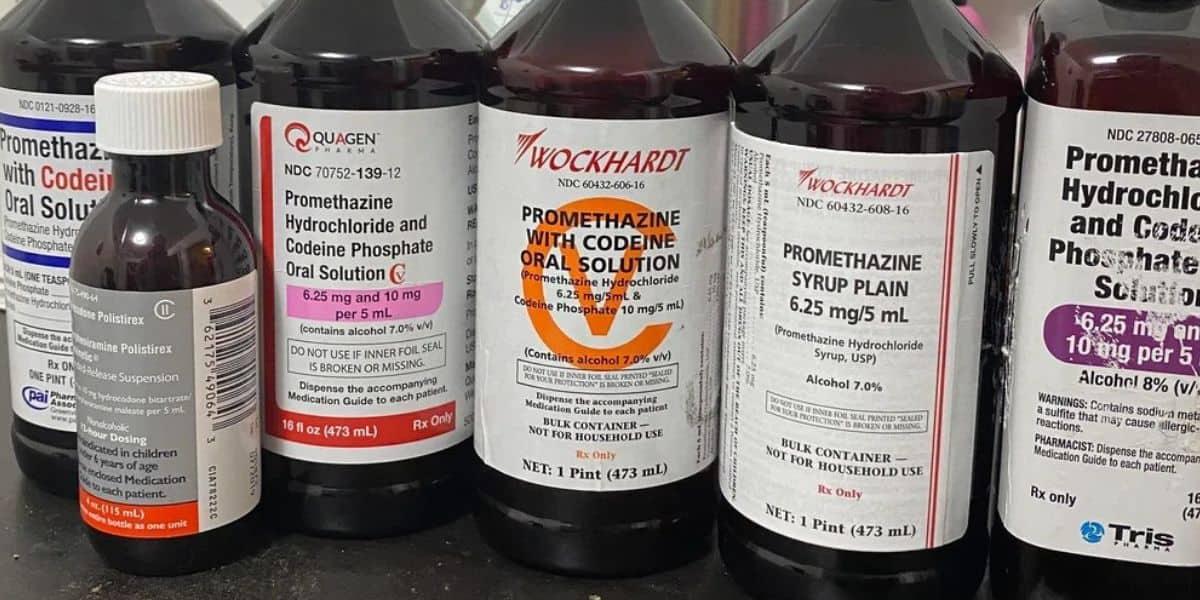What Is Lean Made Of?


Lean, also known as “purple drank,” “sizzurp,” or “dirty sprite,” is a recreational drug that has gained notoriety, particularly in hip-hop culture. The drink consists primarily of prescription-strength cough syrup containing codeine and promethazine, mixed with soft drinks and sometimes candy like Jolly Ranchers to enhance its flavor. While it might appear harmless due to its common ingredients, lean is far from safe. This concoction has sedating side effects and carries a high risk of addiction and other severe health consequences.
Lean has become popular among various demographics, especially teenagers and young adults, often influenced by hip-hop music and media portraying the drug as a cool or trendy beverage. Many users are drawn to lean because it is easy to prepare with ingredients that are relatively accessible. However, this accessibility belies the fact that lean contains a potent mix of substances that can cause serious health issues, including respiratory depression, organ damage, and addiction.

What Is Lean?
Lean is a dangerous recreational drug that combines prescription-strength cough syrup with other easily accessible ingredients. Its misuse has been popularized through music and media, leading many to underestimate its potential harm. Despite its seemingly harmless appearance, lean has a significant impact on the central nervous system, making it a highly addictive and life-threatening substance.
Lean includes a mixture typically composed of:
- Prescription cough syrup containing codeine
- Soft drinks (soda, mainly Sprite)
- Candy (Jolly Ranchers)
- Antihistamine promethazine
- Opioid codeine
- Sweeteners for taste
- Artificial flavoring
- Over-the-counter medications
It originated in Houston, Texas, and became popularized by figures like DJ Screw, who used it to create a relaxed and “chopped and screwed” music style. Lean’s use has since spread, especially among teens and young adults, influenced by hip-hop music, where it is often glorified.
Despite its seemingly innocent ingredients, lean poses a significant health risk. The opioid codeine present in the cough syrup acts as a central nervous system depressant, causing users to feel relaxed and euphoric. This euphoric effect is further enhanced by the antihistamine promethazine, which intensifies the sedative effects of codeine.
Lean is often consumed in social settings, mixed with soda and candy to mask the taste of the cough syrup. The drink, also called “Texas tea,” has gained a reputation for being “cool” or trendy.
However, this perception belies the dangerous side effects of the drug. It is not just a recreational beverage but a concoction with life-threatening potential. Users of lean might begin drinking it casually. They may not realize the risk of codeine overdose and addiction.
What Is Lean Made Of?
Lean is a combination of legal substances that become dangerous when misused. Its key components, codeine, and promethazine, are potent medications that, when combined and consumed in large amounts, can have severe and sometimes fatal consequences. Understanding the specific ingredients in lean is essential for recognizing its potential for abuse and addiction.
Lean’s primary ingredient is a codeine-based cough syrup, which combines:
- Codeine (an opioid)
- Promethazine (an antihistamine)
- Soft drink mixers
- Artificial flavorings
- Food coloring
- Added sugar
- Synthetic dyes
- Other inactive ingredients
These substances have a powerful effect on the central nervous system. Codeine, a controlled substance, alleviates pain and suppresses coughing. However, when taken in high doses, it induces a state of euphoria and relaxation. Promethazine, on the other hand, enhances the sedative effects of codeine, making the drink even more potent.

Lean Addiction Treatment at White Oak Recovery Center
For those struggling with codeine addiction, professional treatment is crucial. At White Oak Recovery Center (WORC), comprehensive addiction treatment programs are tailored to address the unique challenges of each patient’s substance abuse.
Lean addiction is a complex condition that often requires a multifaceted approach to treatment. WORC provides evidence-based treatment programs and therapies designed to help people overcome their battle with substance abuse and reclaim their lives.
Treatment at WORC begins with medically supervised detox to safely manage dangerous withdrawal symptoms. This is a critical first step, as withdrawal from lean can be both physically and mentally challenging. The medically supervised environment ensures that you are monitored by medical professionals and supported in a peaceful environment through this difficult phase, reducing the risk of complications.
Following detox, at WORC, residents engage in various therapeutic modalities, including cognitive-behavioral therapy (CBT). CBT helps people understand the underlying causes of their addiction, develop coping strategies, and change harmful thought patterns. Through individual and group therapy sessions, you will learn to identify triggers and develop healthier ways to manage stress and emotions.
WORC also provides a supportive environment for recovery. Every resident receives individualized care that addresses their specific needs, whether it’s managing co-occurring mental health disorders with our dual diagnosis treatment program, rebuilding family relationships with family therapy, or developing a plan for long-term sobriety. WORC’s comprehensive approach to treatment ensures that you are equipped with the tools, strategies, support, and confidence needed to maintain recovery and avoid relapse.
White Oak Recovery Center offers the expertise and compassionate care to guide you to a healthier, drug-free life. Reach out to WORC today. A life rooted in meaningful recovery awaits you.

Am I covered for addiction treatment?
Your insurance may cover treatment. Call now for an entirely free and confidential assessment. Recovery starts with a phone call.

- Ware, Orrin D., “Lean/Sizzurp Ingredients, Use, and Coping With Mental Health Symptoms.” Substance Abuse: Research and Treatment, Sept. 2023.
- Garcia-Romeu, Albert, et al., “Codeine and Promethazine: Exploratory Study on ‘Lean’ or ‘Sizzurp’ Using National Survey Data and an Online Forum.” Plos One, Mar. 2024.
- Peechakara, Basil V., et al., “Codeine.” StatPearls: National Library of Medicine, Feb. 2024.
- Palamar, Joseph J., “Use of ‘Lean’ Among Electronic Dance Music Party Attendees.” Am J Addict, Sept. 2019.
- “Codeine.” MedlinePlus: National Library of Medicine, Apr. 2024.
Medical Disclaimer:







